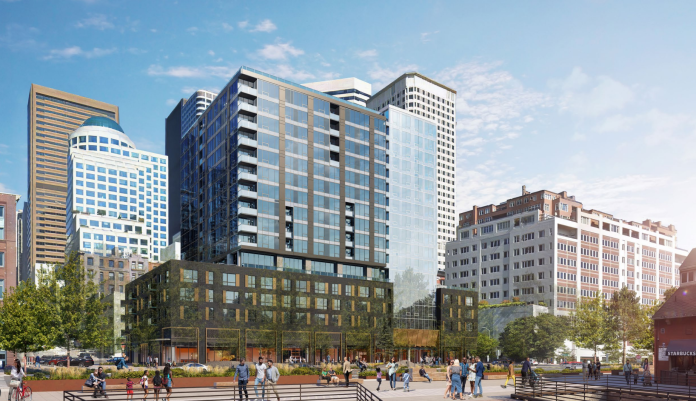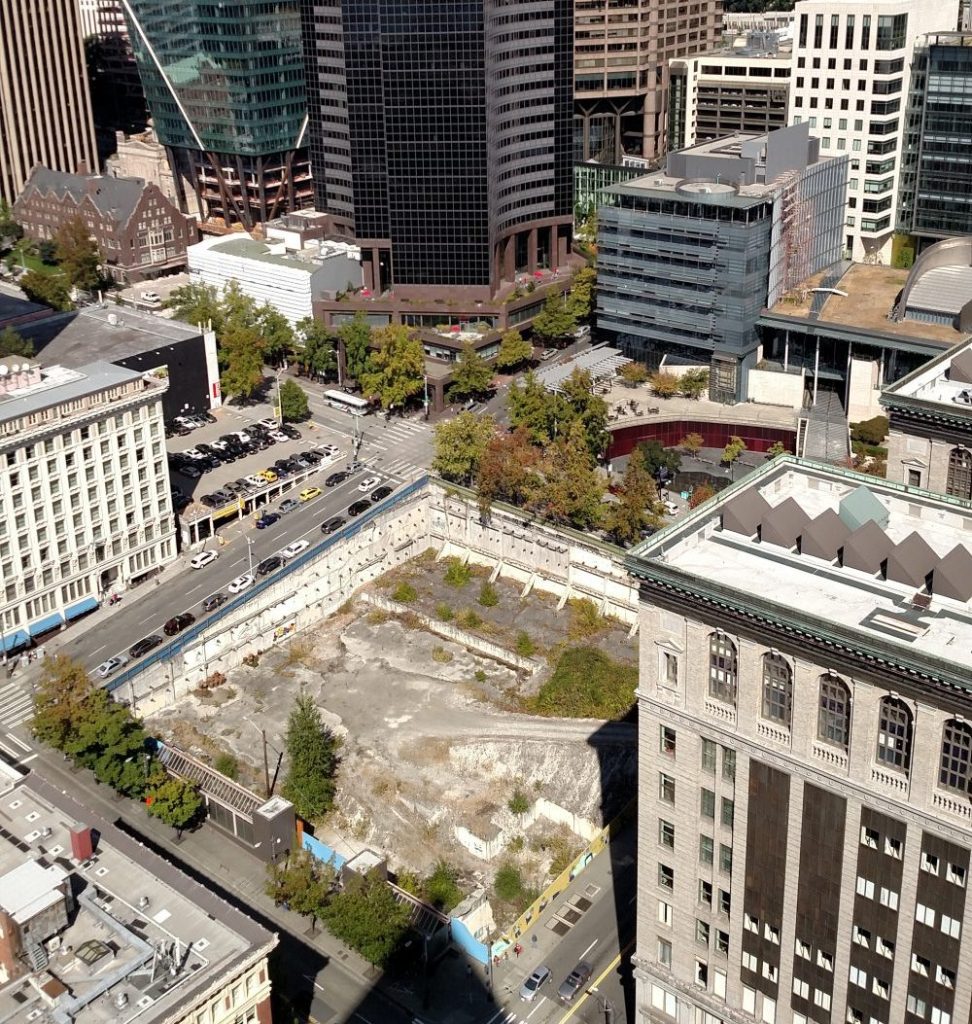
New housing developments with the potential to add thousands of units throughout Seattle are poised to get a helping hand thanks to a proposal moving forward right now at the Seattle City Council. On Thursday, the council’s Land Use Committee voted unanimously to extend permit applications and existing permits for projects that had initially been submitted under the city’s 2015 and 2018 building code. Without this move, all of these projects would have to undergo significant redesign to conform to the 2021 building code now in force in order to move forward. Builders say that would add costs that would mean many never actually break ground.
Under normal circumstances, new projects have two years to complete the process for permit approval, and another year-and-a-half before those permits expire. But with pandemic delays, high interest rates, and soaring inflation upending the financial plans for many projects, an unusually high number of permits have been trapped in limbo. In 2023, the Seattle City Council extended the master use permits for many of these projects to keep them alive, but exactly which building code applies to these holdover projects has remained an outstanding issue.
While this rescue line isn’t likely to make every eligible project feasible, as high interest rates are set to converge with increased materials costs due to international tariffs, the number of projects that would be impacted is significant. According to a staff report produced by Mayor Bruce Harrell’s office, more than 3,000 distinct projects — poised to add around 34,000 units of housing — fall under the scope of the change.
Why are we talking about a 2021 building code in 2025? Seattle adopts new building codes on a three-year cycle, making updates to the state building code and adding city-specific provisions. The 2021 city building code didn’t take full effect in Seattle until last fall. Though it had been initially poised to go much further than the state code, it was ultimately scaled back in a bid to encourage more housing production moving forward. But any major change in building code would require a top-to-bottom reworking of existing building plans. That’s where this change comes in.
A major target of this legislation are around 15 large projects in Downtown Seattle. On the list: a 40-story tower being developed by Chicago-based developer AMLI at 5th Avenue and Lenora Street that would finally fill in a long-vacant lot. AMLI also has another project on the waterfront, a 17-story, 245-unit building along Western Avenue, that could also move forward.

Those 15 projects would have been poised to bring in around $75 million in funding for affordable housing, via the city’s Mandatory Housing Affordability program. Those fees are automatically updated every year to account for inflation, meaning those payments are the same as an equivalent project entering the pipeline today. Ultimately, the move is part of a whole suite of changes proposed by Harrell’s office to keep building projects moving downtown, including narrowly targeted rezones and a three-year design review moratorium.
“Without this legislation, these permit applications could be cancelled, the projects abandoned. We’d be losing critical housing, tax revenue and jobs,” Ardel Jala, a building official with the Seattle Department of Construction and Inspections (SDCI), told the land use committee earlier this month. “Providing the permit extension to these and other permit holders experiencing financial hardship should stimulate economic development.”
The downside to allowing projects to move forward under outdated building codes is the potential for increased building emissions. But with Seattle City Light providing buildings in the city with 100% renewal energy already, the amount of additional greenhouse gas reduction gained from the new building code is expected to be minimal. On the other hand, pushing building projects in the city core into the red might actually encourage development elsewhere, in places with less sustainable energy sources or where more driving trips would be generated.
“Bringing housing to city centers plays a crucial role in reducing emissions by promoting proximity between where people live, work, and access services,” the Mayor’s Office staff report for this legislation notes.

The list of dormant projects also includes subsidized affordable housing. Scott Surdyke, a senior development manager at Community Roots Housing, told the council this week that the move would allow hundreds of new units to sidestep millions of dollars in increased costs by remaining vested under a prior code. “Two projects in particular represent 350 units at transit stops in the Rainier Valley — if we are forced to comply with the 2021 code, right now they’re vested under the 2015 code, that will add $6.9 million to the cost of these projects. We cannot take it,” Surdyke said.
The idea of giving these projects a lifeline proved uncontroversial at the Land Use Committee, with very little discussion ahead of a 4-0 vote Thursday. However, there was a signal that additional extensions would be harder to come by, even as the city’s building permit downturn doesn’t show any signs of abating any time soon.
“As we get further and further away from the pandemic, I believe, again, that this is prudent today, but this will be the last set of extensions that I will be able to support, moving out of the economic downturn associated with the pandemic,” Committee Vice Chair Dan Strauss said ahead of the vote. “It’s important to keep these projects moving and get them built, there’s a lot of benefit to our city and to our community, and, at the same time, this will be the last of the extensions that I’ll likely support.”
Though the city’s homebuilding landscape seems unlikely to be headed toward anything resembling normalcy any time soon, those questions will remain for another day.
Ryan Packer has been writing for The Urbanist since 2015, and currently reports full-time as Contributing Editor. Their beats are transportation, land use, public space, traffic safety, and obscure community meetings. Packer has also reported for other regional outlets including Capitol Hill Seattle, BikePortland, Seattle Met, and PubliCola. They live in the Capitol Hill neighborhood of Seattle.


